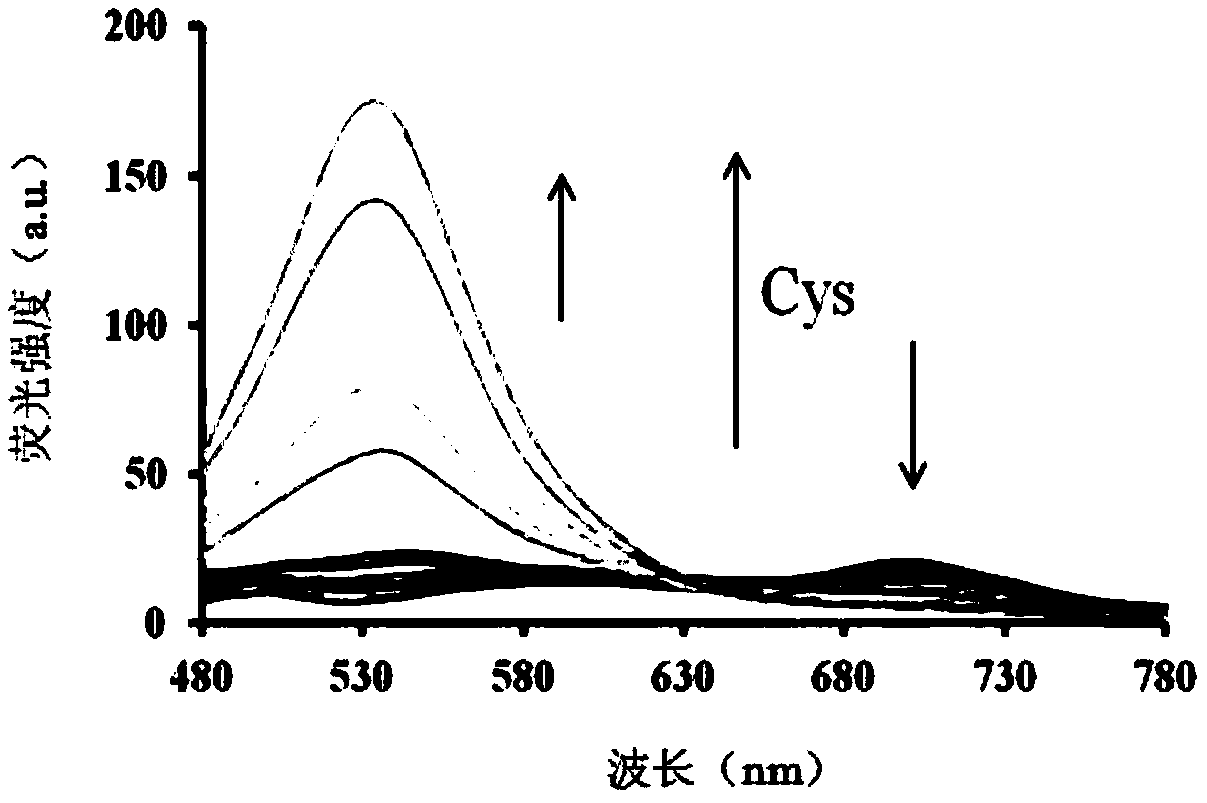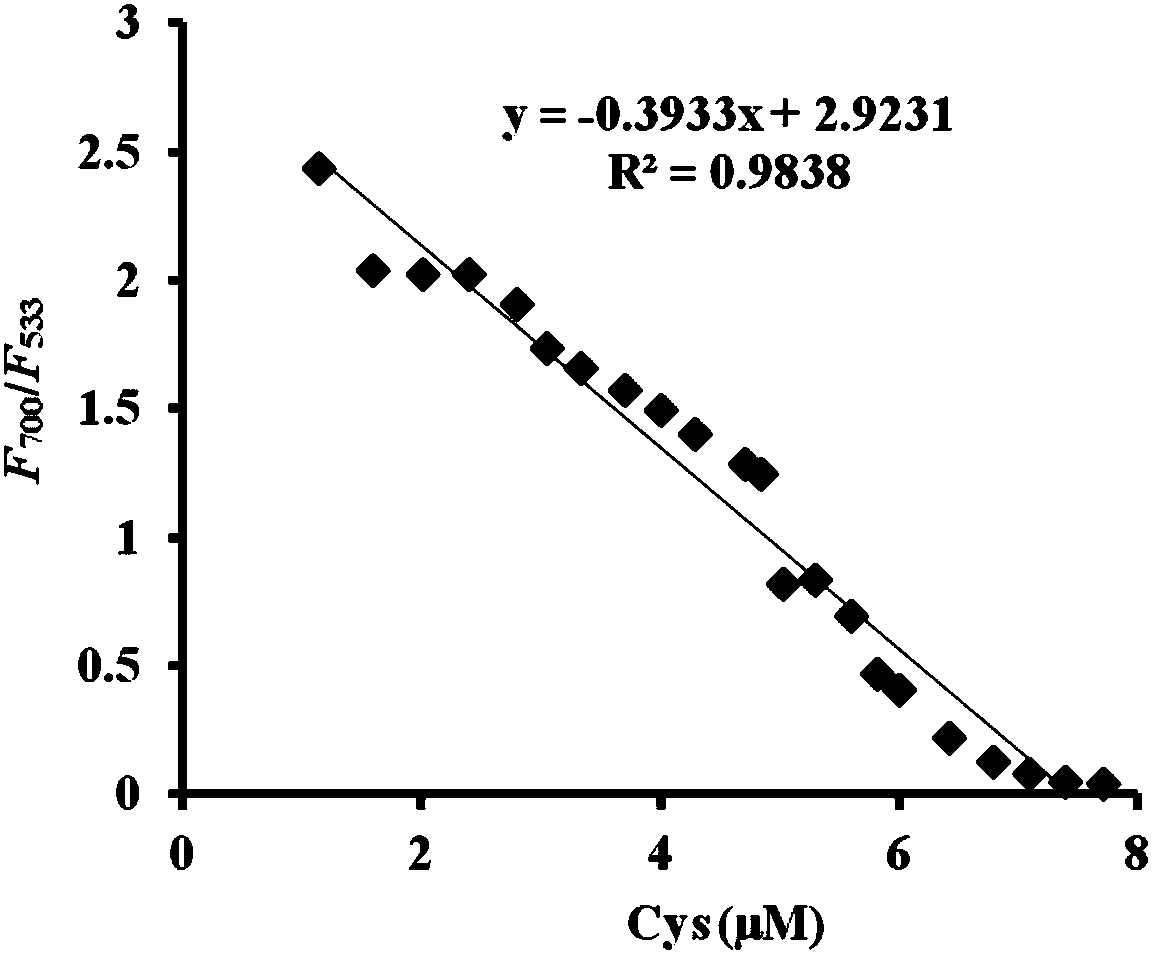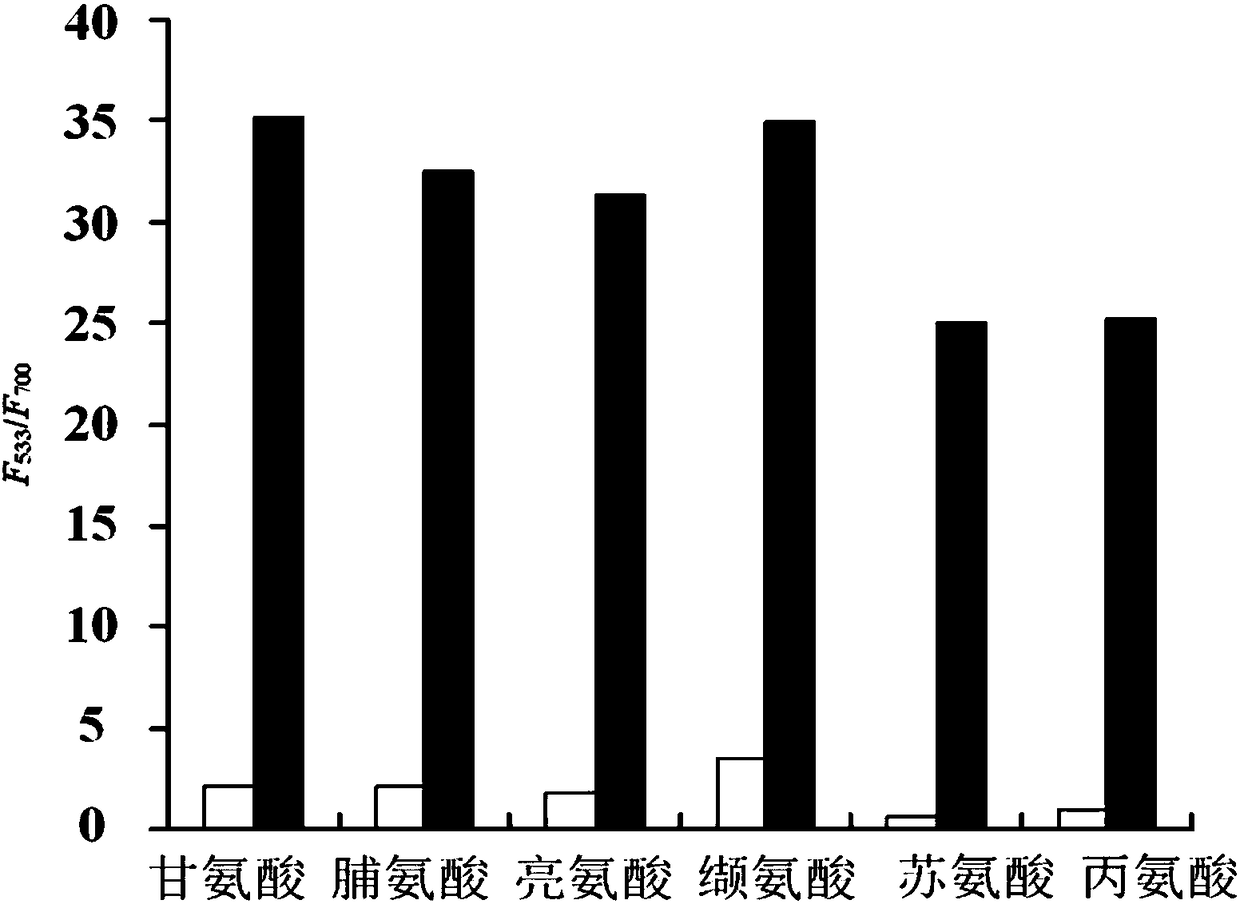Ratio-type near-infrared cysteine fluorescent probe
A compound and straight-chain technology, applied in fluorescence/phosphorescence, luminescent materials, material analysis through optical means, etc., can solve the problem of less biological imaging and achieve good stability
- Summary
- Abstract
- Description
- Claims
- Application Information
AI Technical Summary
Problems solved by technology
Method used
Image
Examples
Embodiment 1
[0043] Example 1 Probe Preparation
[0044] Synthesis and Purification of 2,6-Diformylphenol
[0045] Use a balance to weigh 940.5mg of phenol and 2.80g of hexamethylenetetramine into a 100mL glass reaction bottle, add 30mL of trifluoroacetic acid, put in a clean small magnet, and then use 84-1 magnetic stirring control The warm electric heating mantle is heated to reflux, and the reaction time is recorded. During the reaction, the thin-layer chromatography silica gel plate is used to track the progress, and the reaction takes about 6 hours. After the reaction is complete, the reaction is turned off. The synthesis reaction is shown in formula I:
[0046]
[0047] Formula I: Synthesis of 2,6-diformylphenol
[0048] Prepare a 100mL beaker and pour about 50mL of distilled water into it. After the reaction stopped, after cooling, the reaction solution was added dropwise to the beaker prepared in advance,
[0049] Stir evenly with a dropper, pour the liquid in the beaker int...
Embodiment 2
[0072] Embodiment 2 solution preparation
[0073] Weigh 5.22 mg of the final product to prepare 1 mM probe stock solution. Weigh 12.1 mg of cysteine to prepare 10 mM cysteine (Cys) stock solution.
[0074]Pipette 50 μL of liquid from the probe mother solution and dilute to 10 mL to prepare a 5 μM probe detection solution. Divide 10 mL of the probe detection solution into two parts, and add 25 μL of the cysteine mother solution to one of them at a concentration of 50 μM.
[0075] The above-mentioned systems for preparing solutions are ethanol:water=5:5 (v / v), containing PBS=5mM, pH=7.4.
Embodiment 3
[0076] Embodiment 3 The influence of response time on probe recognition cysteine
[0077] Prepare a 5 μM probe detection solution as described in Example 2, then quickly add cysteine mother solution to make the concentration 10 μM, shake a few times, make the substances in the solution evenly distributed, and quickly put it into the fluorescence spectrophotometer In the meter, set the fluorescence spectrophotometer to scan once every 30 seconds, thereby obtaining the response spectrum at different times, record and save the spectrogram, and the room temperature during detection is 25°C. The detection solution system is still ethanol:water=5:5 (v / v) containing PBS=5mM, pH=7.4. The result is as figure 1 shown. It can be seen from the fluorescence spectrum that the peak value of the pure probe solution is relatively high at 700nm, and there is basically no peak at 530nm. The peak value gradually increased.
PUM
 Login to View More
Login to View More Abstract
Description
Claims
Application Information
 Login to View More
Login to View More - R&D
- Intellectual Property
- Life Sciences
- Materials
- Tech Scout
- Unparalleled Data Quality
- Higher Quality Content
- 60% Fewer Hallucinations
Browse by: Latest US Patents, China's latest patents, Technical Efficacy Thesaurus, Application Domain, Technology Topic, Popular Technical Reports.
© 2025 PatSnap. All rights reserved.Legal|Privacy policy|Modern Slavery Act Transparency Statement|Sitemap|About US| Contact US: help@patsnap.com



